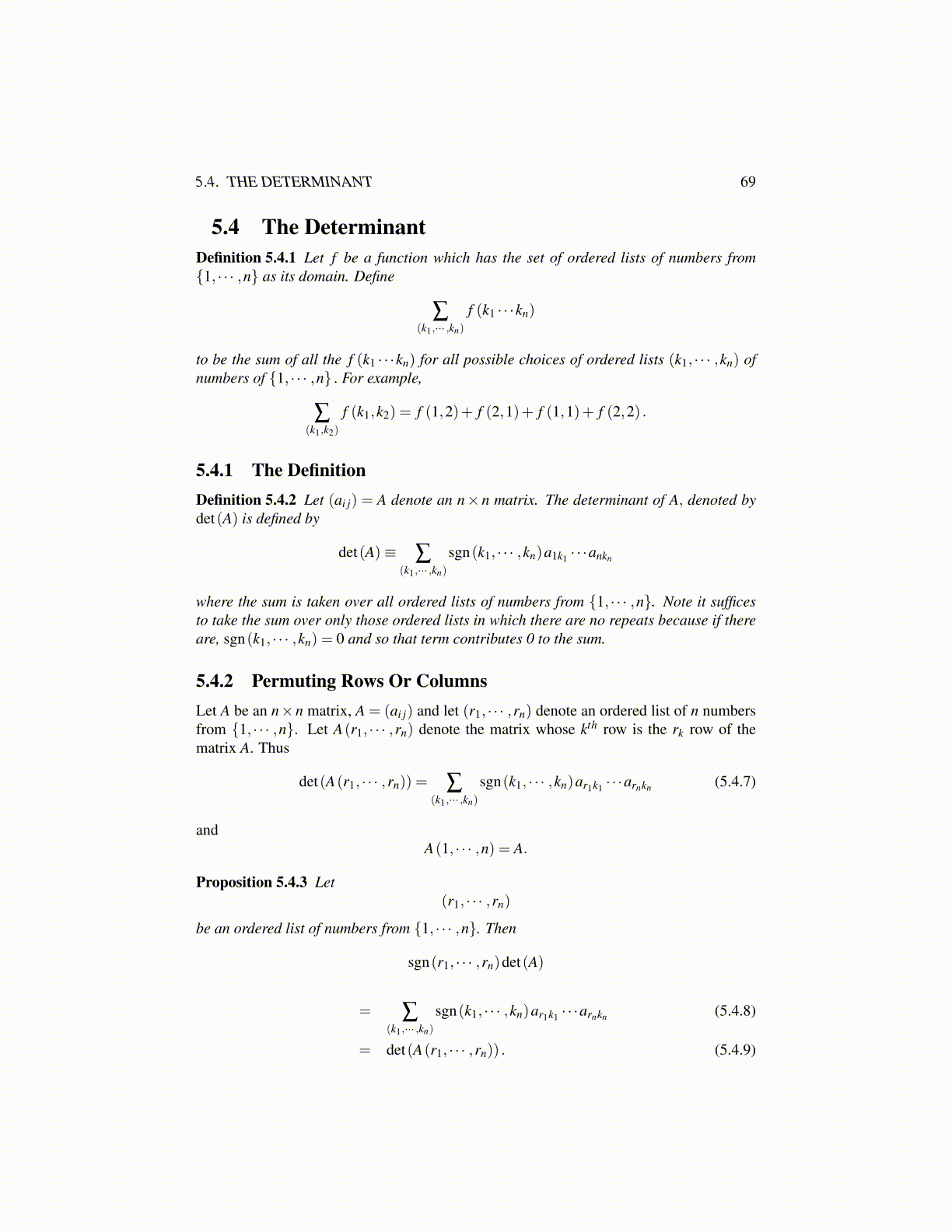
5.4. THE DETERMINANT 69
5.4 The DeterminantDefinition 5.4.1 Let f be a function which has the set of ordered lists of numbers from{1, · · · ,n} as its domain. Define
∑(k1,··· ,kn)
f (k1 · · ·kn)
to be the sum of all the f (k1 · · ·kn) for all possible choices of ordered lists (k1, · · · ,kn) ofnumbers of {1, · · · ,n} . For example,
∑(k1,k2)
f (k1,k2) = f (1,2)+ f (2,1)+ f (1,1)+ f (2,2) .
5.4.1 The DefinitionDefinition 5.4.2 Let (ai j) = A denote an n× n matrix. The determinant of A, denoted bydet(A) is defined by
det(A)≡ ∑(k1,··· ,kn)
sgn(k1, · · · ,kn)a1k1 · · ·ankn
where the sum is taken over all ordered lists of numbers from {1, · · · ,n}. Note it sufficesto take the sum over only those ordered lists in which there are no repeats because if thereare, sgn(k1, · · · ,kn) = 0 and so that term contributes 0 to the sum.
5.4.2 Permuting Rows Or ColumnsLet A be an n×n matrix, A = (ai j) and let (r1, · · · ,rn) denote an ordered list of n numbersfrom {1, · · · ,n}. Let A(r1, · · · ,rn) denote the matrix whose kth row is the rk row of thematrix A. Thus
det(A(r1, · · · ,rn)) = ∑(k1,··· ,kn)
sgn(k1, · · · ,kn)ar1k1 · · ·arnkn (5.4.7)
andA(1, · · · ,n) = A.
Proposition 5.4.3 Let(r1, · · · ,rn)
be an ordered list of numbers from {1, · · · ,n}. Then
sgn(r1, · · · ,rn)det(A)
= ∑(k1,··· ,kn)
sgn(k1, · · · ,kn)ar1k1 · · ·arnkn (5.4.8)
= det(A(r1, · · · ,rn)) . (5.4.9)